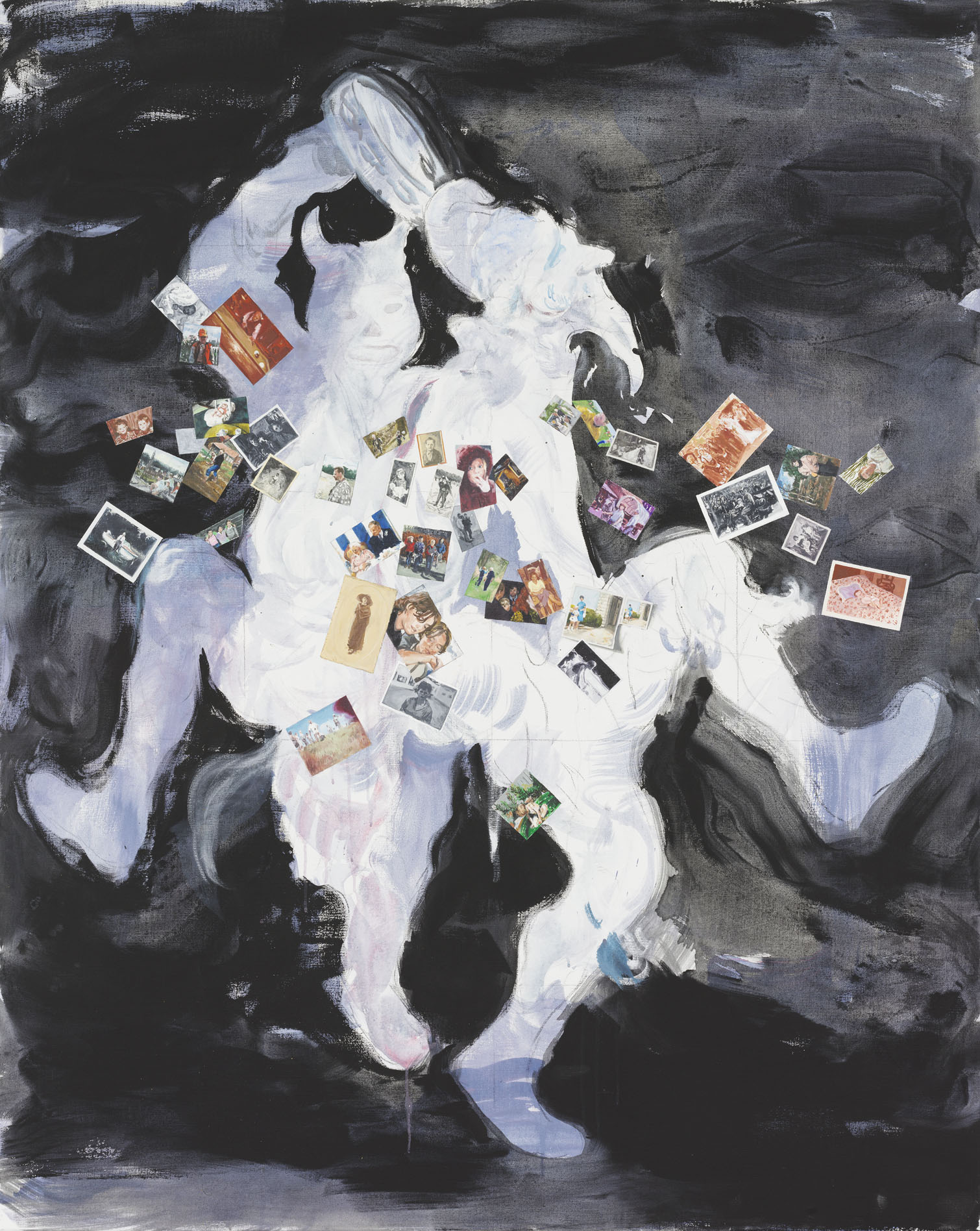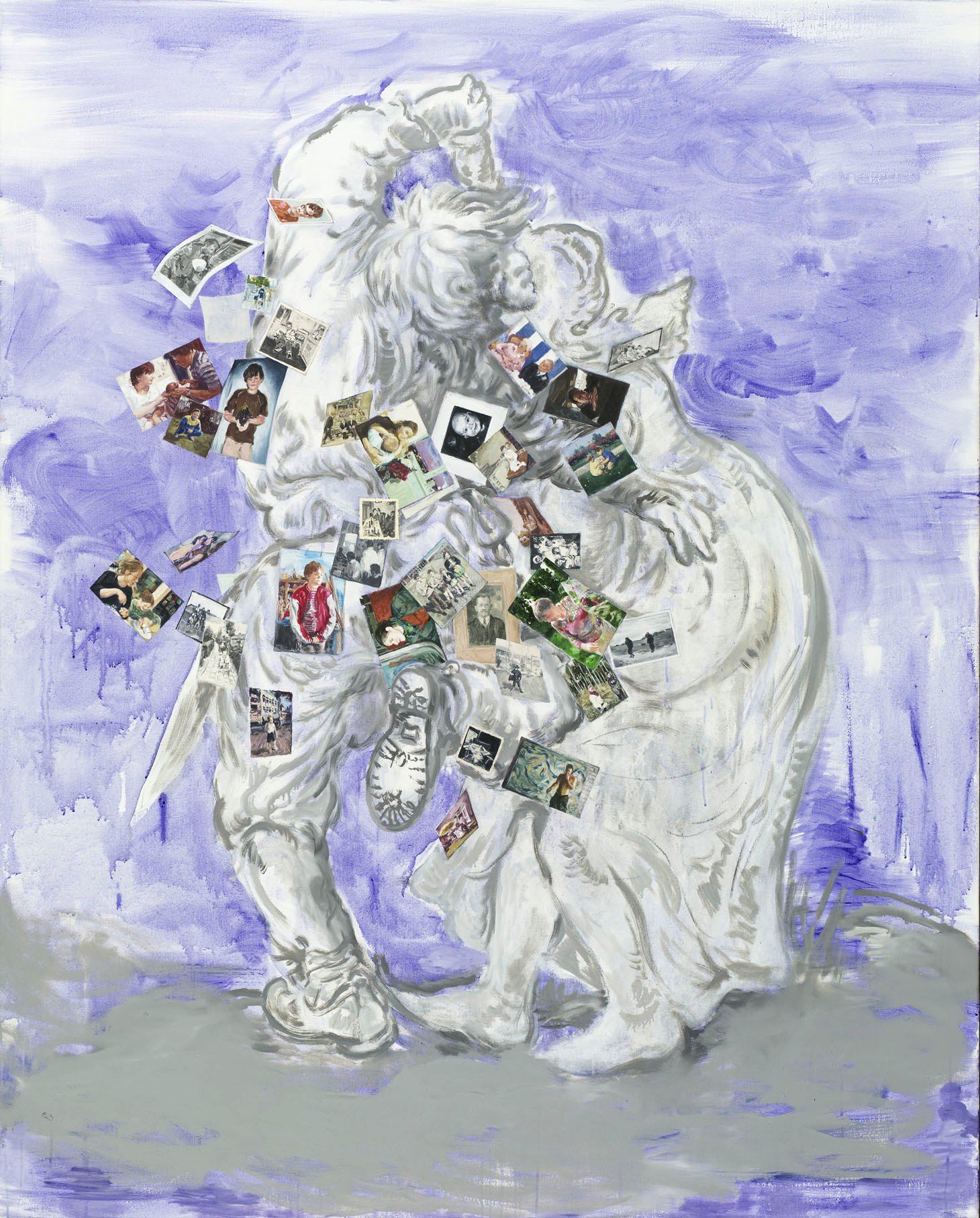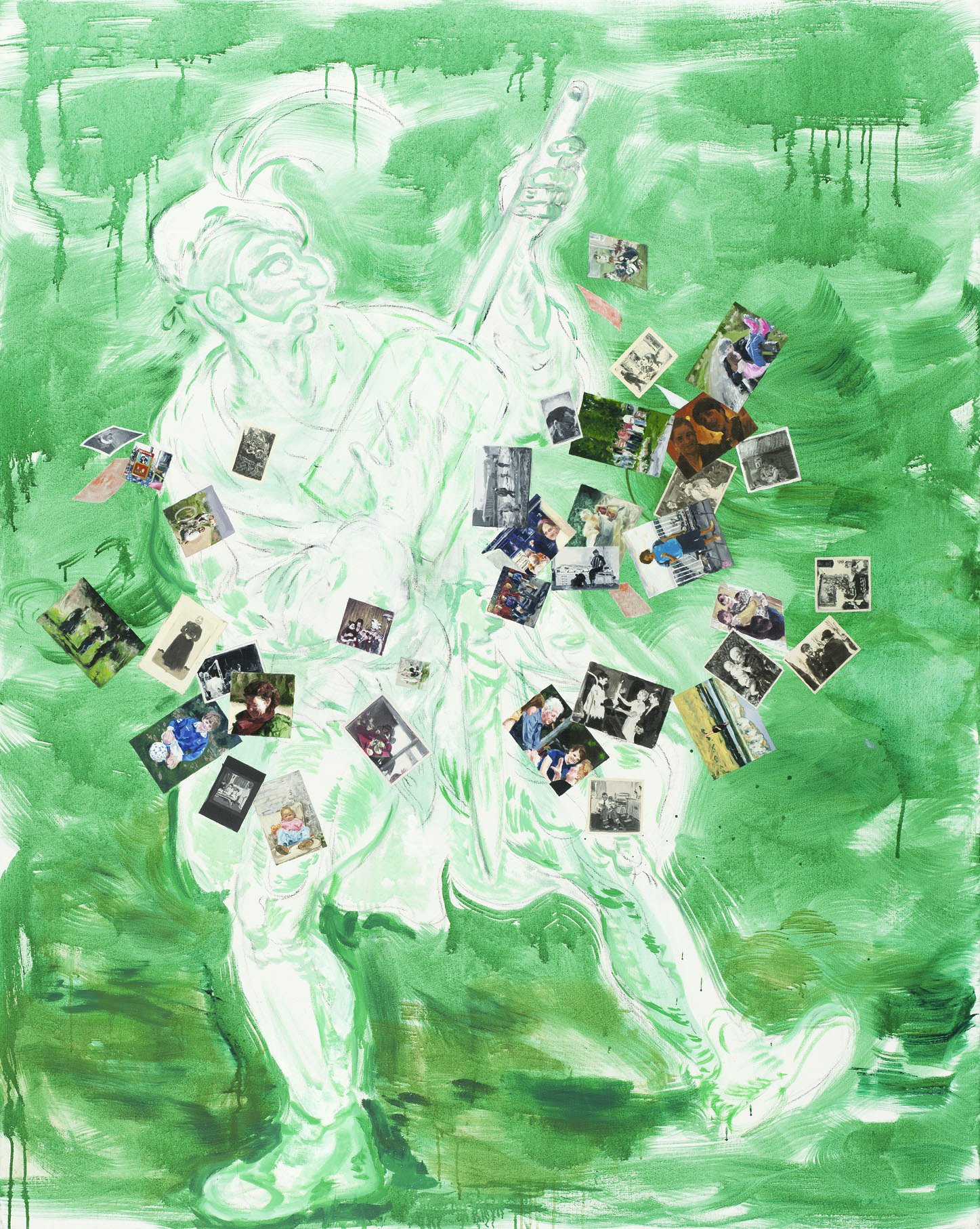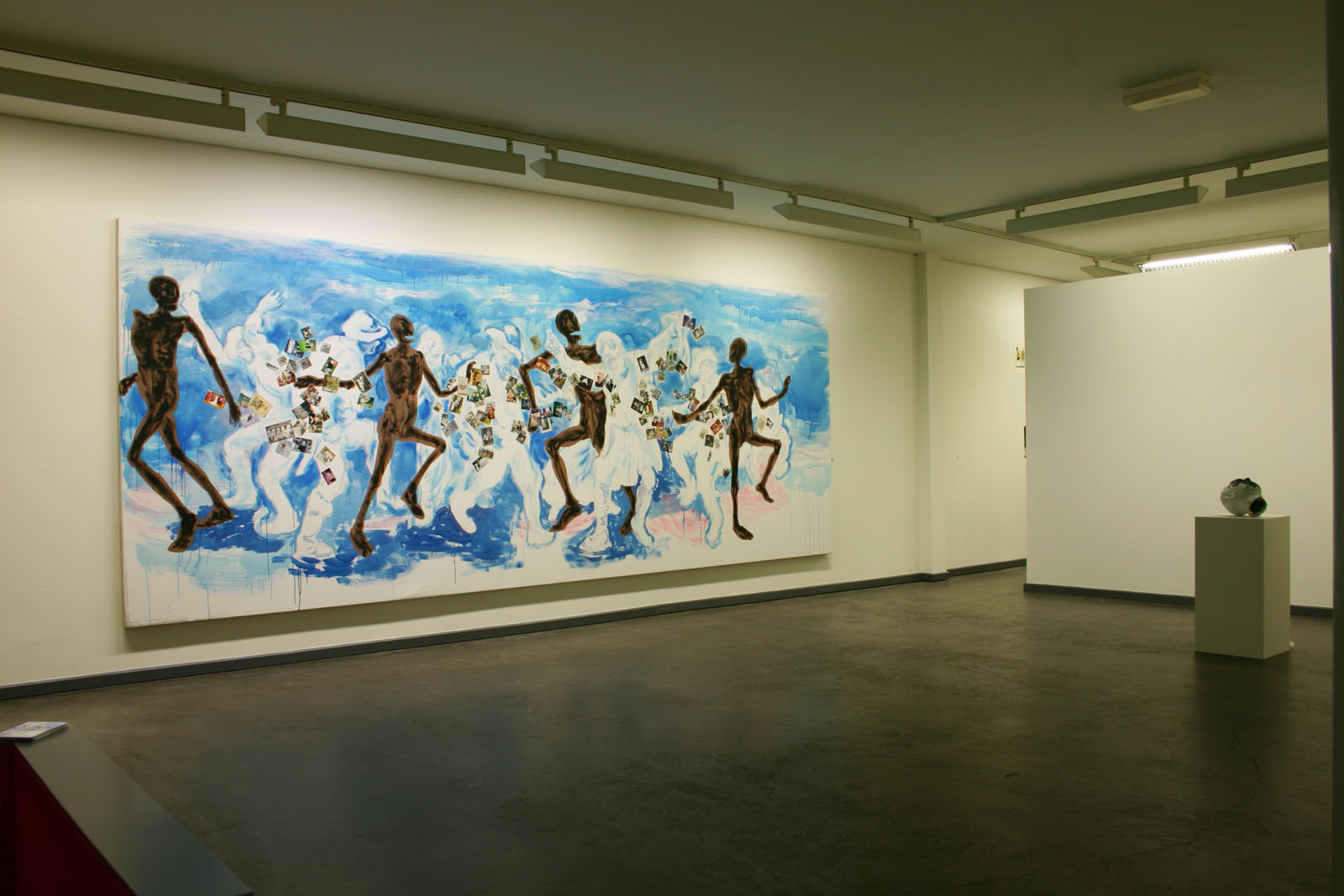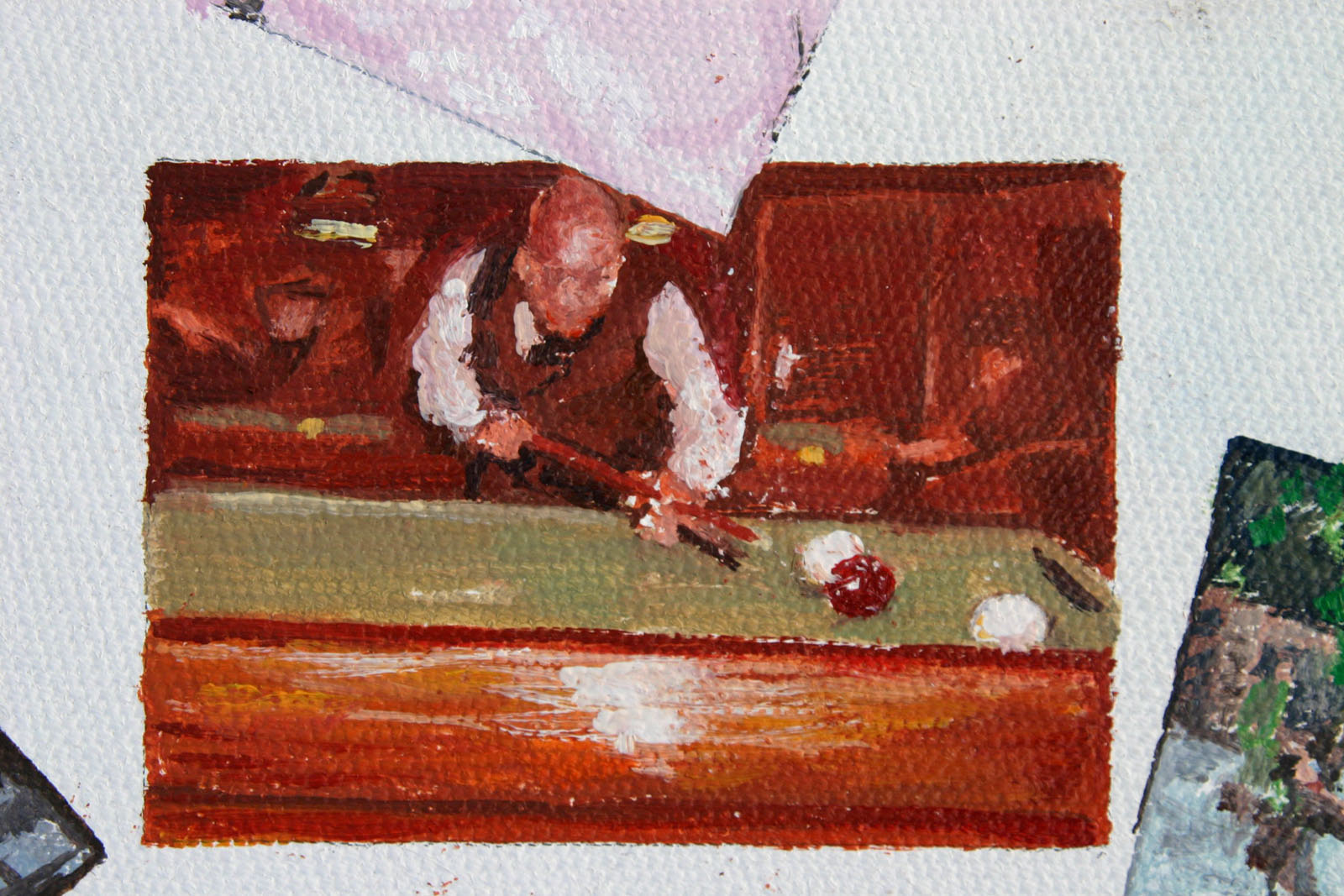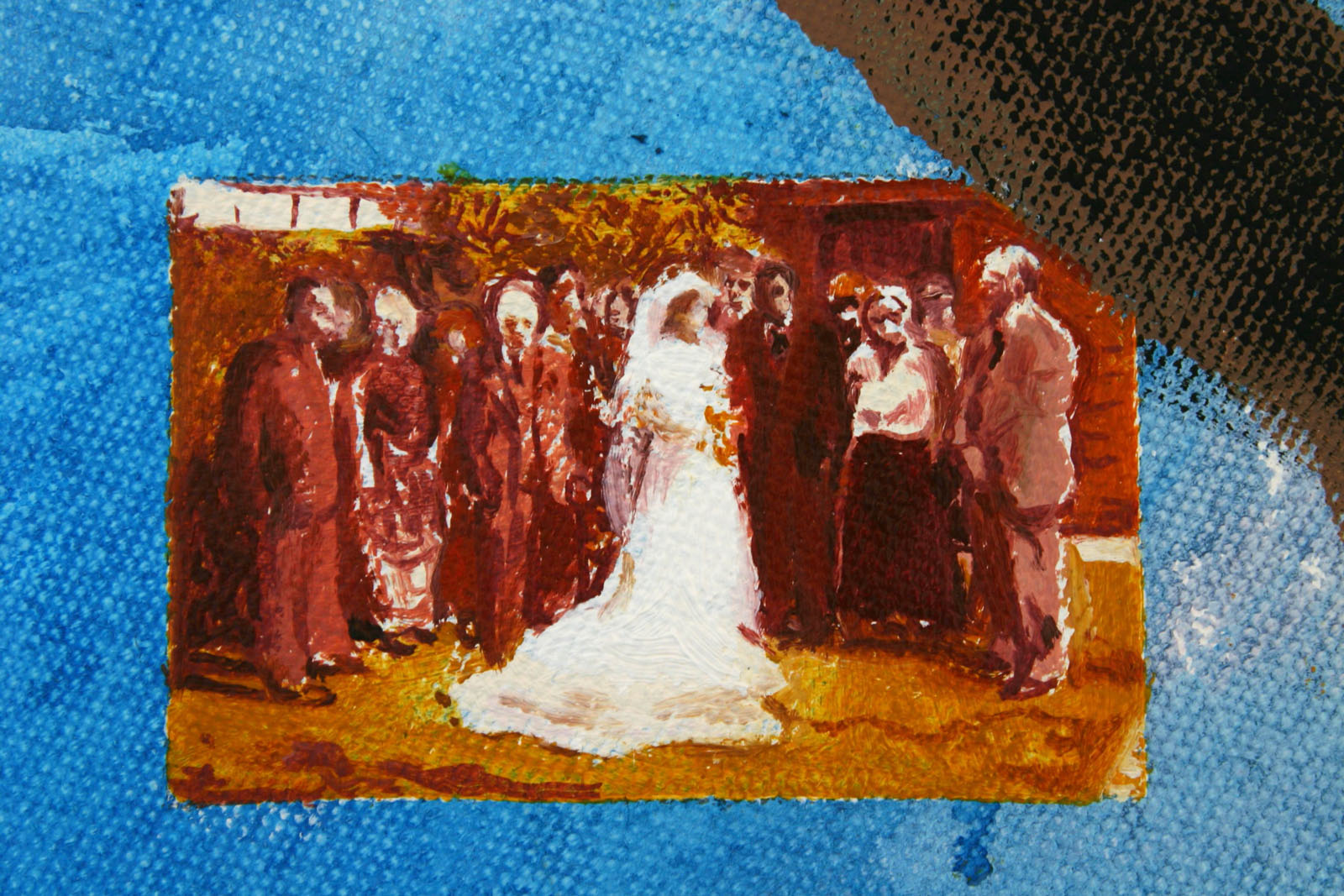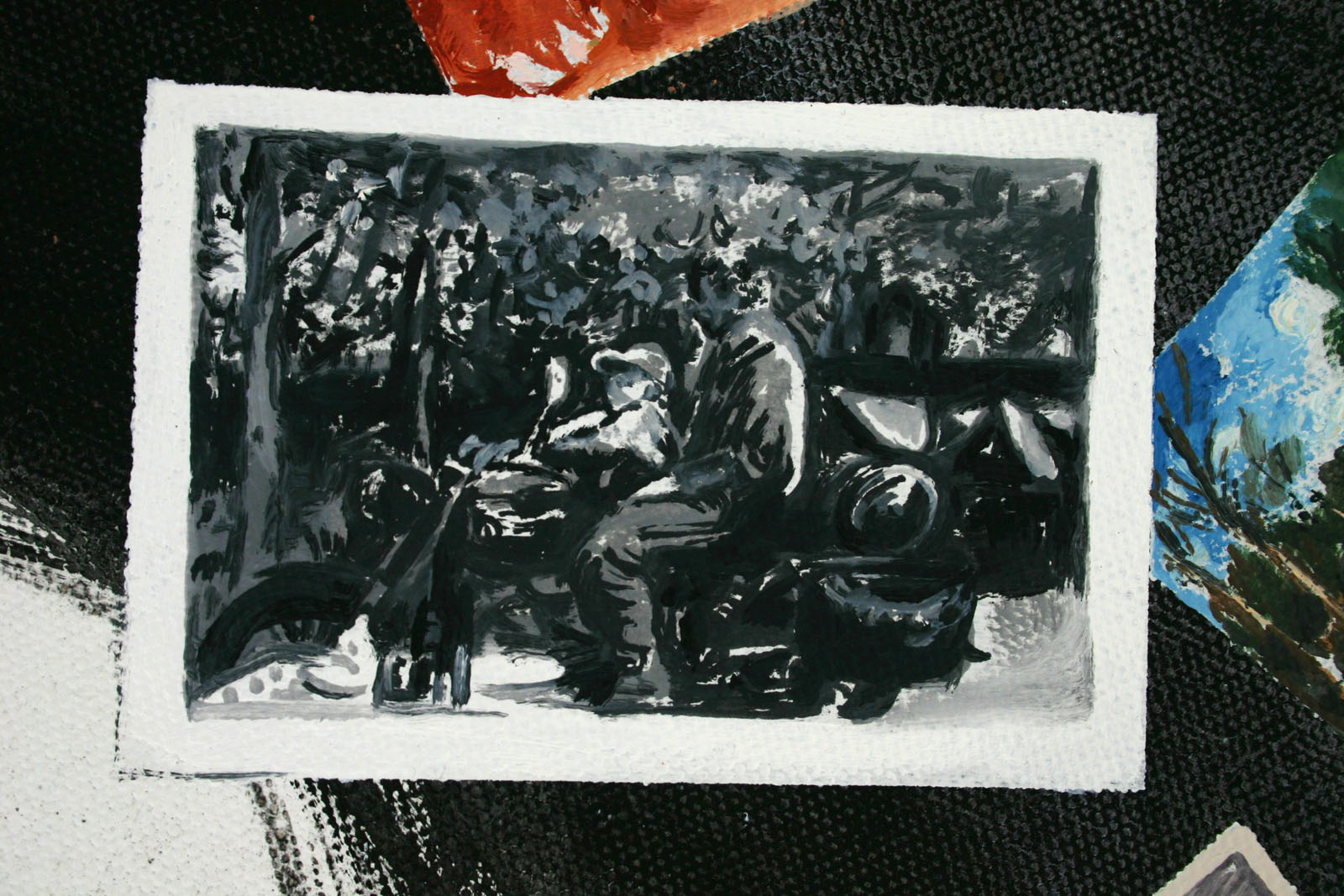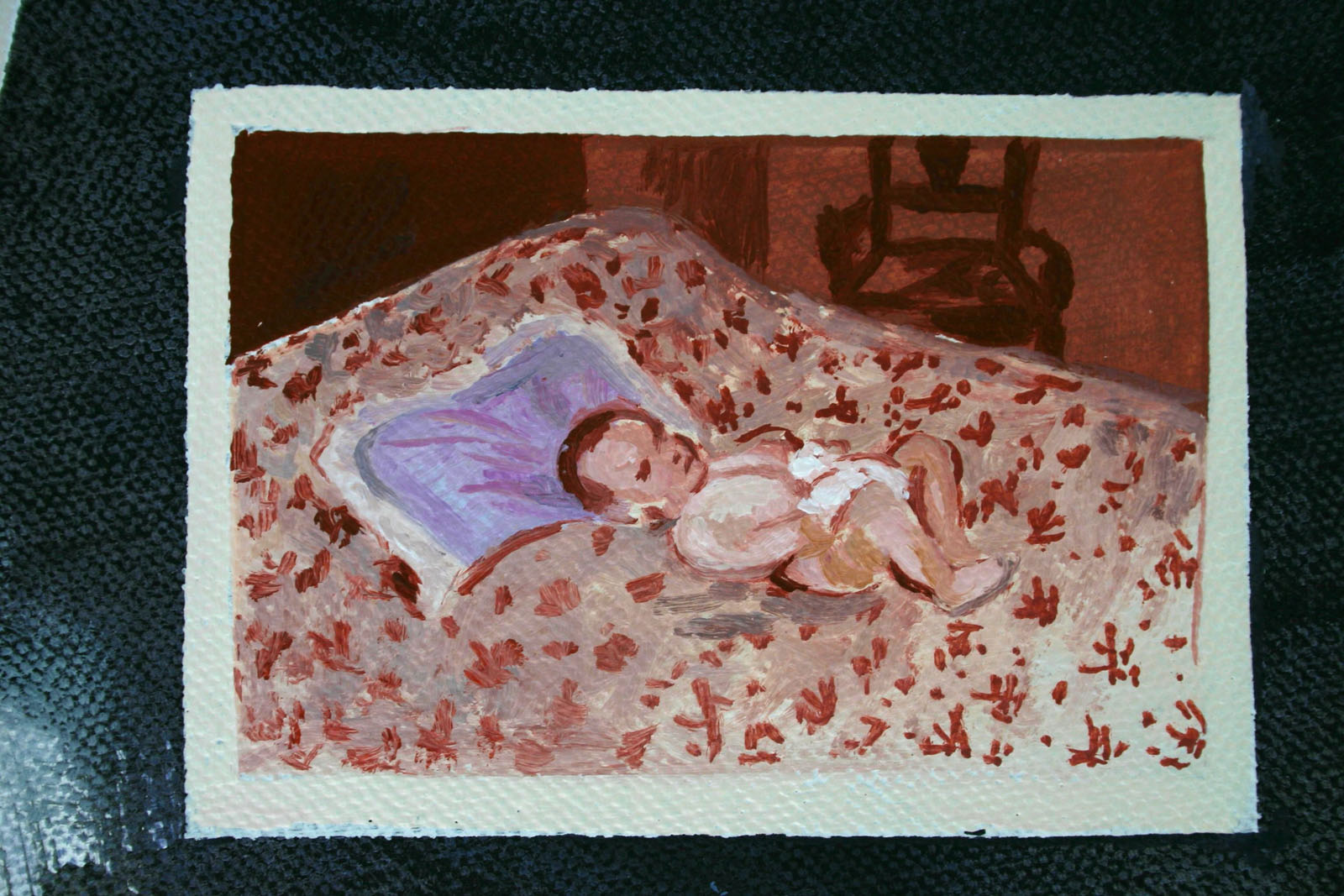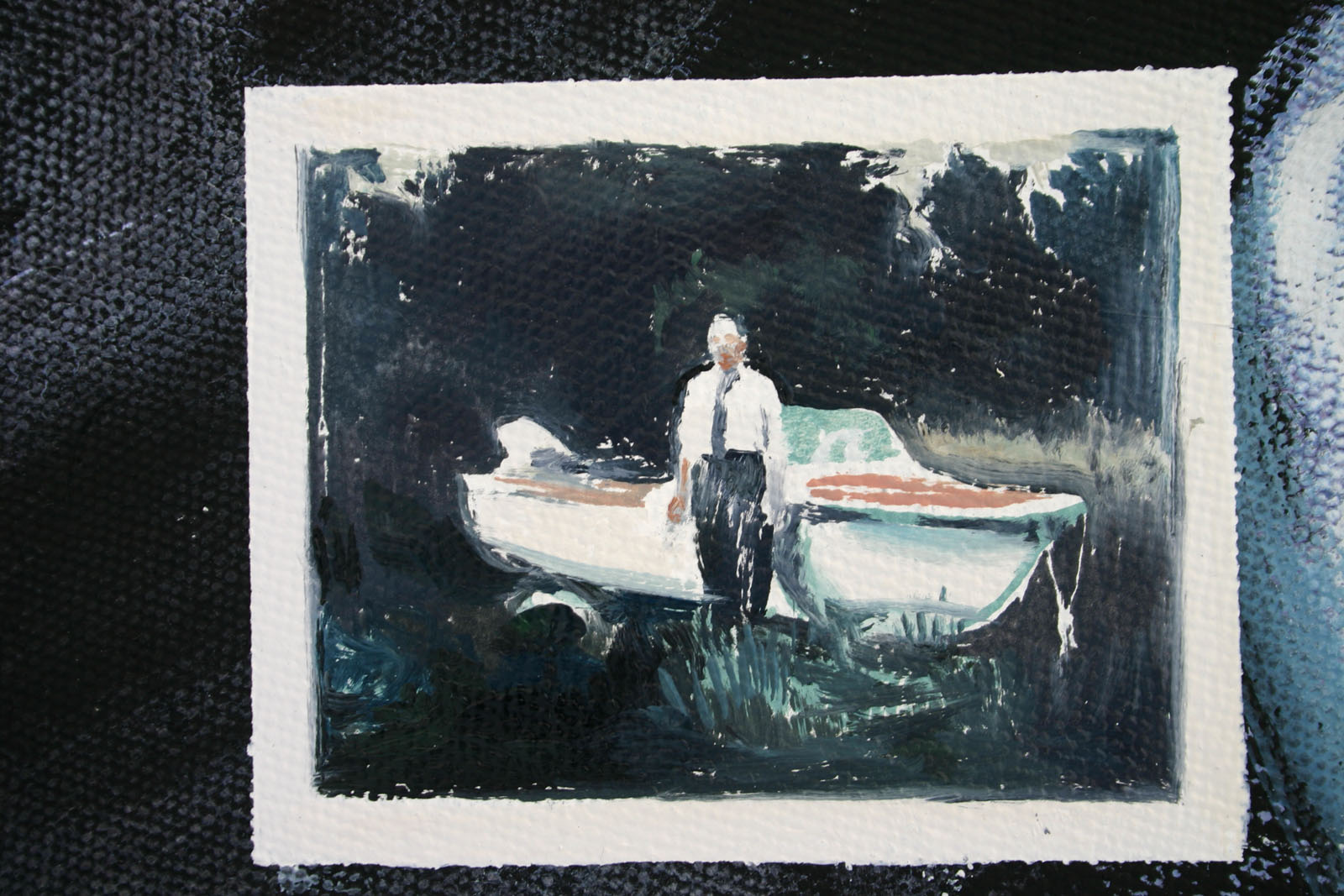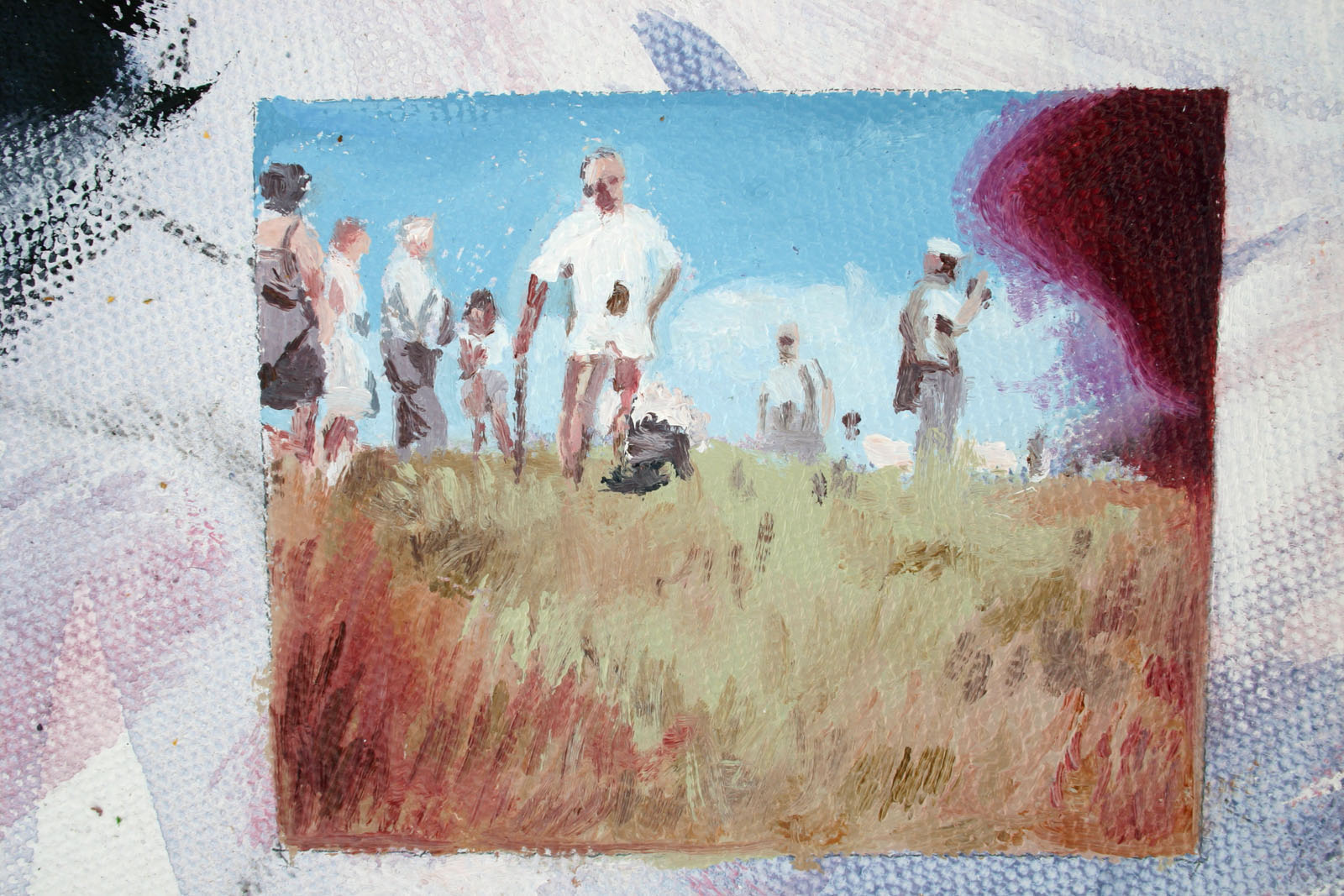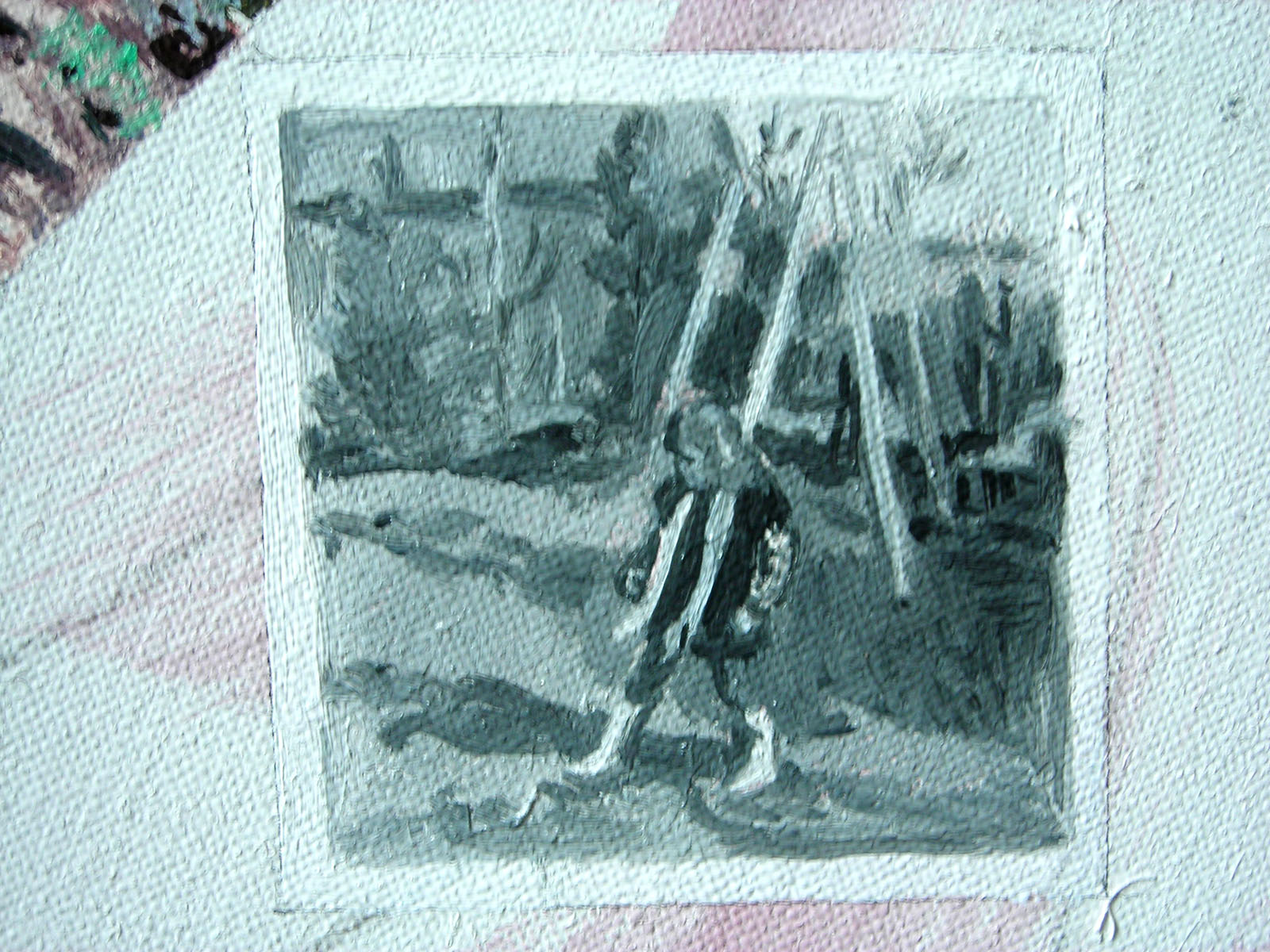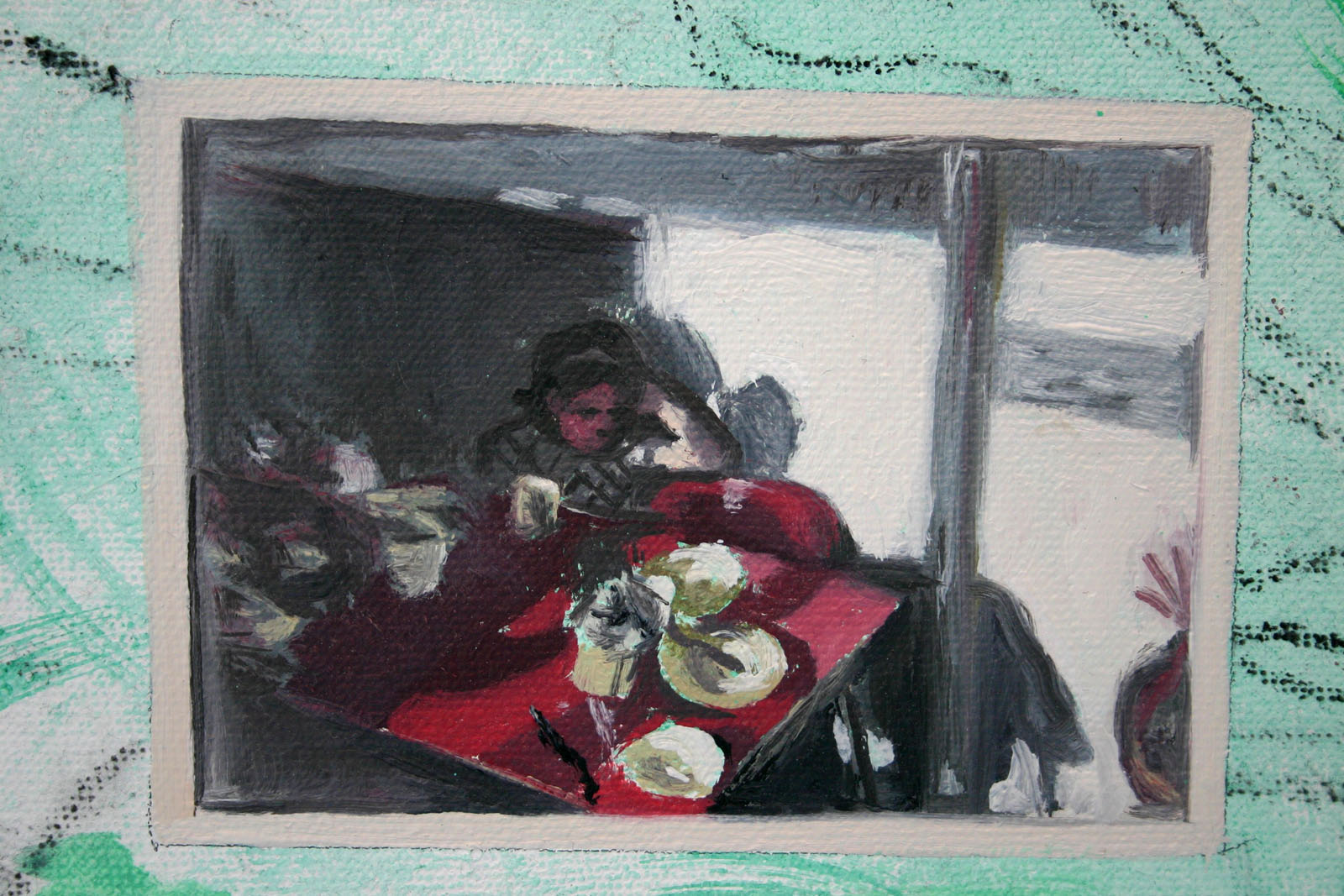Dance of death
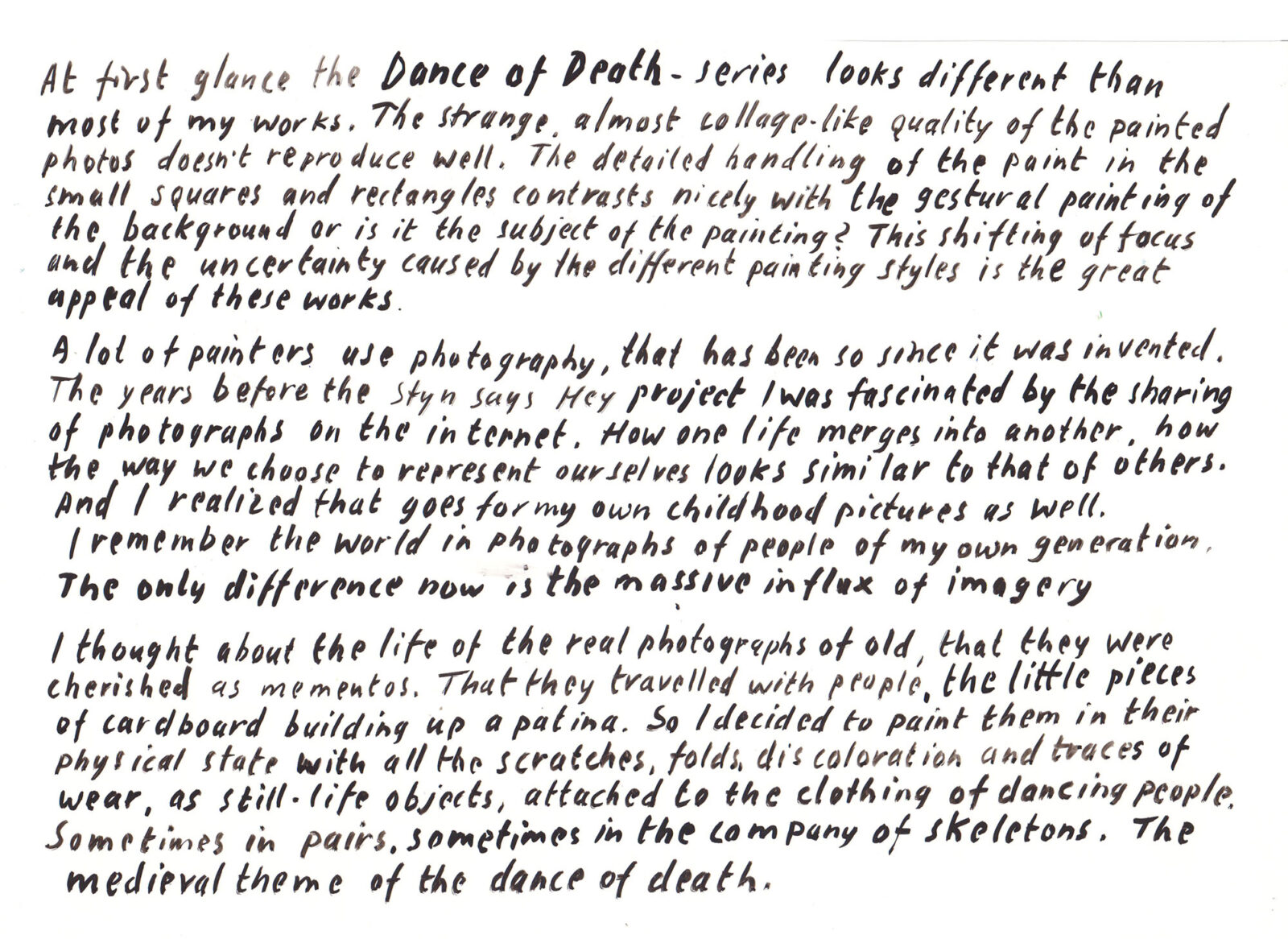
At first glance the ‘Dance of Death-series’ looks different than most of my works. The strange, almost collage-like quality of the painted ‘photographs’ doesn’t reproduce well. The detailed handling of the paint in the small squares and rectangles contrasts nicely with the gestural painting of the background, or is this contrast the subject of the painting? This shifting of focus and the uncertainty caused by the different painting styles is an appealing aspect of these works.
A lot of painters use photography, that has been so since it was invented. The years before the ‘Stijn says Hey-project’ I was fascinated by the sharing of images on the internet. How one life merges into another, how the way we choose to represent ourselves looks similar to that of others. And I realized that goes for my own childhood pictures as well. I remember the world in photographs of people from my own generation. The only difference today is the massive influx of imagery.
I thought about the life of the real photographs of old, that they were cherished as mementos. That they travelled with people, the little pieces of cardboard building up a patina. So I decided to paint them in their physical state with all the scratches, folds, discoloration and traces of wear. As still-life objects, attached to the clothing of dancing people. Sometimes in pairs, sometimes in the company of skeletons. The medieval theme of the dance of death
There are several ‘dance of death’-paintings. There is one in the collection of the van Abbemuseum. The largest measures 6 meter in length and feels like a freeze, stimulating movement.
